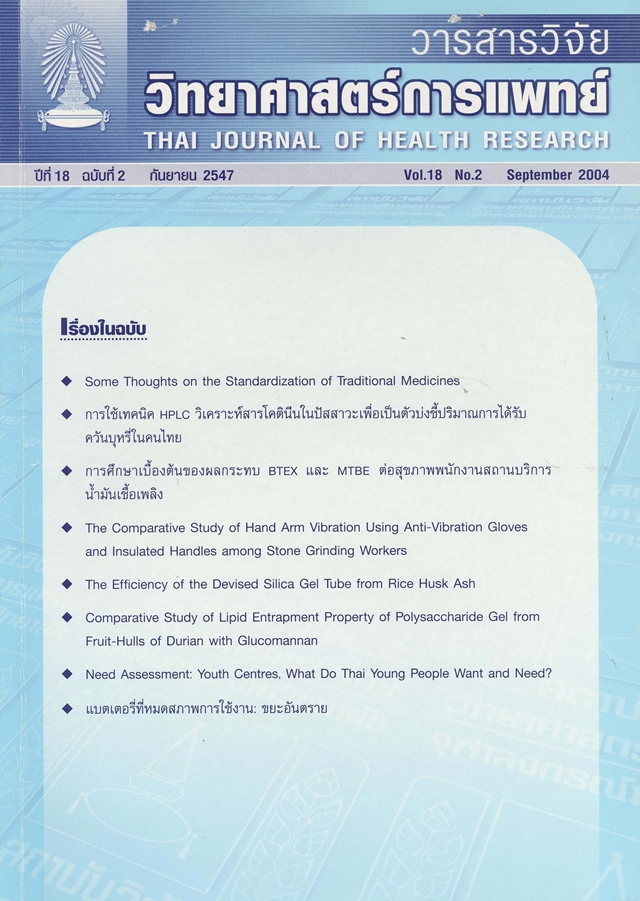Development of a Simple Strip Test for the Detection of Hepatitis B Surface Antigen
Keywords:
hepatitis B virus, surface antigen, diagnosis, reagent stripsAbstract
Hepatitis B surface antigen simple strip test has been developed by using the locally produced monoclonal antibody and compared with commercial ELISA test (ABBOTT Laboratories). One thousand serum samples, 500 positives and 500 negatives, diagnosed with commercial ELISA (ABBOTT) by the National Blood Bank Center of Thai Red Cross Society were used for method comparison with the developed strip test and also commercial strip test (ABBOTT). The comparative results with the commercial ELISA test showed that the developed simple strip test had a sensitivity of 90% and specificity of 99.6%. While the commercial rapid test (ABBOTT) had a sensitivity of 94.6% and the specificity of 100% when compared with the commercial ELISA test. Due to the advantages of the simple strip test which were simple, convenience to perform, easily to interpret, the test could be used in small scale laboratory or applied to use as a tools to study in Hepatitis B virus epidemiology.







